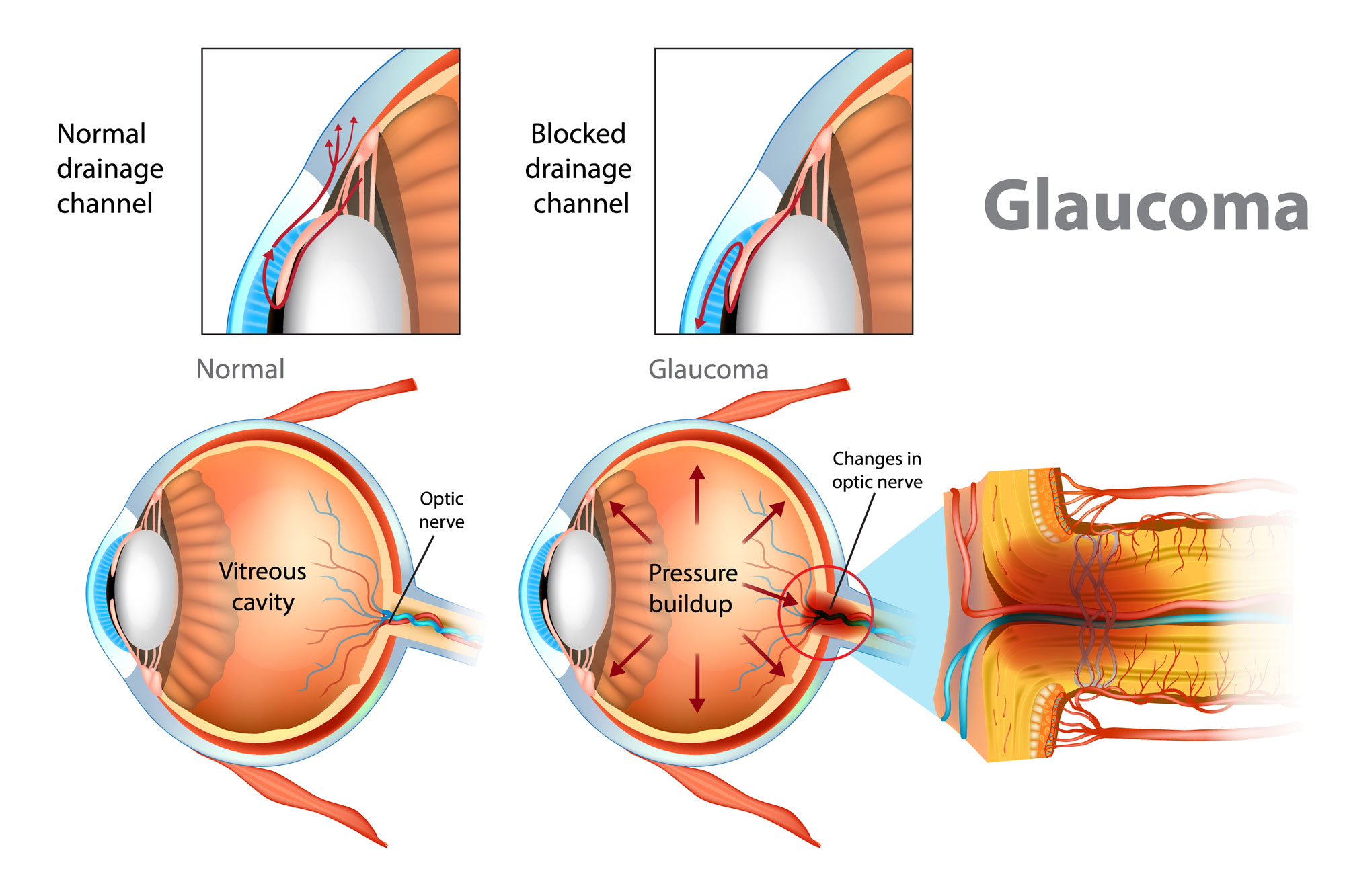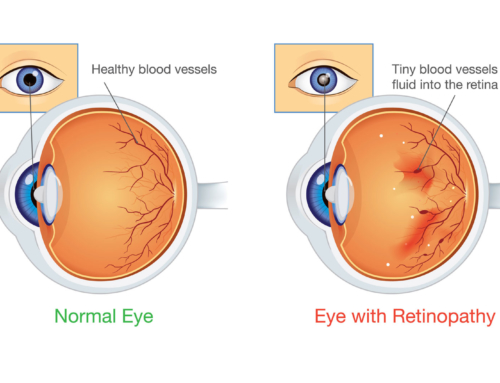Glaucoma is a group of eye diseases that cause vision loss by damaging the optic nerve, the part of the eye that sends images to the brain. The optic nerve is made up of millions of nerve fibers. When the pressure inside the eye builds up, damage to these fibers occurs.
Types of Glaucoma
Primary open-angle glaucoma:
This is the most common form of glaucoma. It may occur when the eye’s drainage system becomes less efficient, resulting in a buildup of eye pressure. This pressure can ultimately damage the optic nerve, causing peripheral vision loss initially and can lead to blindness. Because this can develop slowly and be entirely symptom free in the beginning, early detection is important to prevent vision loss.
Acute angle-closure glaucoma:
This is a less common form. It occurs when the drainage canals become completely blocked, resulting in a sudden rise in intra-ocular pressure.
A number of symptoms may occur:
- Headache
- Blurred vision
- Severe eye pain
- Halos around lights
- Nausea
If any of the above symptoms occur, seek immediate medical attention. This is a true eye emergency which could lead to blindness.
Other Types of Glaucoma
Normal tension glaucoma:
This is a condition that develops even though the intraocular pressure is within the normal range.
Secondary glaucoma:
This can result from an from eye injury, inflammation, tumor or advanced cases of cataract or diabetes.
Congenital/pediatric glaucoma:
These are forms of glaucoma diagnosed very early in life. This condition usually effects both eyes, but one eye may be more affected than the other.
Symptoms
Depending on the type of glaucoma and its stages, there may be no symptoms at all. Because of this, it may be painless and go undetected for years. However, if enough optic nerve fibers are damaged, peripheral vision may be reduced. If left untreated, central vision may also eventually deteriorate. This is why annual eye exams are so important for those at risk. The condition may be diagnosed by an eye doctor before the patient is even aware of it.
Risk Factors for Glaucoma
- Age over 60
- African, Hispanic, or Asian heritage
- Family history
- High eye pressure
- History of diabetes, cardiovascular disease, past eye injury
- Use of steroid medication
Treatments
Medication:
In most cases, initial treatment involves the daily use of eyedrops. Compliance is extremely important in order to keep intraocular pressure under control.
Laser Surgery:
Laser surgery is usually performed in your doctor’s office or clinic. Surgery will help fluid drain from the eye and ultimately lower intraocular pressure to keep it under control.
Conventional Surgery:
Conventional surgery is performed in the operating room. It’s is often used after medication and laser surgery have failed to control eye pressure. The goal of surgery is again to lower the pressure within the eye.
Prevention
There are no known ways to prevent glaucoma. However, early detection of the condition allows it to be managed more effectively, resulting in less damage to vision. Regular comprehensive dilated eye exams (performed more frequently for those at greater risk) are often the best way to detect glaucoma.
For more information on living with vision loss, contact Lighthouse Low Vision Services at: (206) 436-2154






